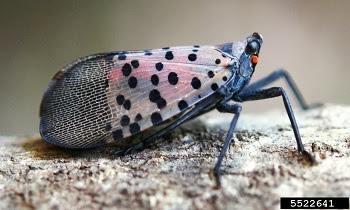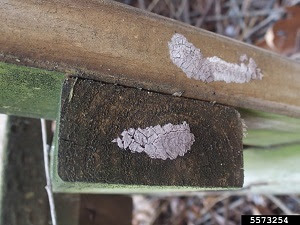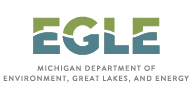
$55 Million Expansion of Michigan Reconnect Program

FOR IMMEDIATE RELEASE August 11, 2022 Contact: [email protected]
Lt. Governor Gilchrist II Highlights $55 Million Expansion of Michigan Reconnect Program to Help More Michiganders Get Postsecondary Degrees Partners spotlight $6 million in new grants for Michigan Reconnect and Futures for Frontliners students
LANSING, Mich. — Today, during an event at Grand Rapids Community College, Lt. Governor Garlin Gilchrist II touted the bipartisan Fiscal Year 2023 budget’s inclusion of $55 million for the Michigan Reconnect program, calling it an affirmation of the program’s ongoing success in easing the path for working-age adults to earn a college degree or certificate.
“I was proud today to celebrate our historic budget investment in Michigan Reconnect,” said Lt. Governor Garlin Gilchrist II. “Reconnect is growing our economy, helping employers fill high-skilled job openings, and putting Michiganders on a tuition-free path to higher education and skills training. And there is even more to applaud. We recently added another $6 million in new grants to provide wraparound supports that reduce educational barriers and celebrated accepting more than 100,000 Michiganders into the program. Governor Whitmer and I will continue working with anyone to put Michigan’s adult learners on a path to a brighter future.” The Michigan Reconnect program, which provides free or reduced community college tuition for students 25 and older who have not yet earned a degree, was launched in February 2021.
Lt. Governor Gilchrist was joined by Michigan Department of Labor and Economic Opportunity’s Office of Sixty by 30 Director Sarah Szurpicki, Grand Rapids Community College President Dr. Juan R. Olivarez, Grand Rapids Area Chamber of Commerce Vice President of Government Affairs Josh Lunger, and Michigan Reconnect student Morgan Brink.
A married mother of two, Morgan Brink and her young family understand the value of the Reconnect program. At 32, Brink never thought college was possible for her until the COVID pandemic presented a unique chance to rethink her next steps. Realizing that college was the path to a more secure future and an opportunity to demonstrate to her children the power of education, she decided to enroll in classes through Reconnect.
“Honestly, I barely graduated from high school,” Brink said. “Now, my daughter sees me studying and going to school and now she’s already talking about going to college. That’s the power of the Michigan Reconnect program – it’s for college degrees now and for our children later.”
Today’s event highlighted how Michigan Reconnect and Futures for Frontliners are creating a rewarding path to in-demand careers for Michiganders and encouraged more participants to join the Michigan Reconnect program.
“We are continuing to build support from all corners – the business and economic development community, elected leaders, educational leaders – to make the pathway easier for adult learners,” said Sarah Szurpicki, Michigan Department of Labor and Economic Opportunity’s Office of Sixty by 30 Director. “The numbers are truly amazing. The people of Michigan are showing up and enrolling in college like never before. We need to encourage even more Michiganders to start on the road to higher earnings and a more secure future.”
“We are proud of our success as a Michigan Reconnect and Futures for Frontliners partner as we strive to attract, train and graduate students for the high-paying and high-demand jobs that will drive Michigan’s, and our region’s, economic future,” said Dr. Juan R. Olivarez, Grand Rapids Community College President.
Dr. Olivarez praised the Reconnect and Futures for Frontliners programs as vital in overcoming the barriers that often stand in the way of a college education for so many adult students. He pointed to the growing number of enrollees at Grand Rapids Community College, which has enrolled 1,100 Reconnectors and 1,004 Futures for Frontliners students for the upcoming fall semester.
“The reliability and adaptability of talent is a key factor in keeping existing jobs in a community, and in attracting new companies to a region,” said Josh Lunger, Grand Rapids Area Chamber of Commerce Vice President of Government Affairs. “The talent pipeline is strong in the Grand Rapids area. Michigan Reconnect and this new investment will make it even stronger.”
Today, Lt. Governor Gilchrist II also highlighted $6 million in grant funding to help defray other costs that often keep adult learners returning to college or enrolling for the first time through the Michigan Reconnect or Futures for Frontliners programs.
The new grants, which will be distributed by the state’s community and tribal colleges, can be used for books, childcare, internet access and transportation to help students pursue associate degrees or skills certificates. Grand Rapids Community College and other eligible institutions can distribute the allocated funds directly to eligible students who have completed at least one semester – with as much as $550 available per student per academic year.
To be eligible for the grants, students must:
The wraparound grants build on Michigan’s network of people and resources in place to provide students with the critical support they need to successfully enroll in classes and complete a skill certificate or associate degree program.
To help Reconnect students succeed with the steps leading up to enrolling with a community college, the state’s Reconnect Navigators are available to help applicants complete admissions and financial aid requirements, set career goals, identify relevant educational opportunities and create a plan to graduate. Navigators, who reach out to students after they have been accepted into Reconnect, will also connect students to additional programs and assistance offered by their community college and local partners to remove barriers to education.
About Michigan Reconnect Michigan Reconnect is the largest effort in state history to ensure that Michiganders who are 25 or older and do not have a college degree have an opportunity to earn an associate degree or skills certificate with free or deeply discounted tuition.
Since Michigan Reconnect launched, over 100,000 Michiganders have been accepted into the scholarship program and nearly 18,000 have enrolled in a community college, helping to drive success toward Gov. Whitmer’s Sixty by 30 goal of having 60% of Michiganders with a postsecondary degree or skills certificate by 2030. In Kent County alone, there have been approximately 6,500 Reconnect applicants.
Michigan Reconnect pays the cost of in-district tuition for eligible adults who want to pursue an associate degree or skills certificate at any of Michigan’s public community colleges, including its three tribal colleges. Eligible residents can attend community college tuition-free at a community college where they are considered in-district. For those who are not considered in-district by a community college, Michigan Reconnect will still cover up to the in-district portion of tuition.
More information is available at Michigan.gov/Reconnect.
A recording of the event can be found here.
|









 “Although not unexpected, this is certainly tough news to share due to its potential to for it to negatively impact Michigan’s grape industry,” said McDowell. “Spotted lanternfly has been moving closer to the state over the last few years. MDARD, along with our state, local and federal partners, has been working tirelessly to inform and educate growers and the public about this highly invasive insect.”
“Although not unexpected, this is certainly tough news to share due to its potential to for it to negatively impact Michigan’s grape industry,” said McDowell. “Spotted lanternfly has been moving closer to the state over the last few years. MDARD, along with our state, local and federal partners, has been working tirelessly to inform and educate growers and the public about this highly invasive insect.” “MDARD and MDNR are working with the United States Department of Agriculture to define the extent of the infestation,” said Mike Philip, MDARD’s Pesticide and Plant Pest Management Division Director. “Although we can’t pinpoint exactly how it got here, it likely hitchhiked on nursery stock brought in from an infested state and has possibly been here for several months. We are in the assessment stage of response, but it is important to note that typical pest management techniques have not proven effective for eliminating the pest in other states.”
“MDARD and MDNR are working with the United States Department of Agriculture to define the extent of the infestation,” said Mike Philip, MDARD’s Pesticide and Plant Pest Management Division Director. “Although we can’t pinpoint exactly how it got here, it likely hitchhiked on nursery stock brought in from an infested state and has possibly been here for several months. We are in the assessment stage of response, but it is important to note that typical pest management techniques have not proven effective for eliminating the pest in other states.” Spotted lanternfly moves easily on firewood, tires, campers, vehicles and more. Prevention and early detection are vital to limiting the spread of spotted lanternfly. If you find a spotted lanternfly egg mass, nymph or adult, take one or more photos, make note of the date, time and location of the sighting, and report it online to Eyes in the Field. Photos are necessary to verify a report and to aid in identification.
Spotted lanternfly moves easily on firewood, tires, campers, vehicles and more. Prevention and early detection are vital to limiting the spread of spotted lanternfly. If you find a spotted lanternfly egg mass, nymph or adult, take one or more photos, make note of the date, time and location of the sighting, and report it online to Eyes in the Field. Photos are necessary to verify a report and to aid in identification.






 Several state parks in southern Michigan will host volunteer stewardship workdays in August. Volunteers are needed to help with removing invasive plants that threaten high-quality ecosystems.
Several state parks in southern Michigan will host volunteer stewardship workdays in August. Volunteers are needed to help with removing invasive plants that threaten high-quality ecosystems.
 It’s time to talk about your state forests.
It’s time to talk about your state forests.
 Staff recommendations on whether to keep, exchange or sell land in the fifth set of 10 counties in the DNR’s state land review process are nearing DNR director approval, but there’s still plenty of time to review and share feedback via the
Staff recommendations on whether to keep, exchange or sell land in the fifth set of 10 counties in the DNR’s state land review process are nearing DNR director approval, but there’s still plenty of time to review and share feedback via the  Help improve wildlife habitat and hunting access at state game and wildlife areas with
Help improve wildlife habitat and hunting access at state game and wildlife areas with 
